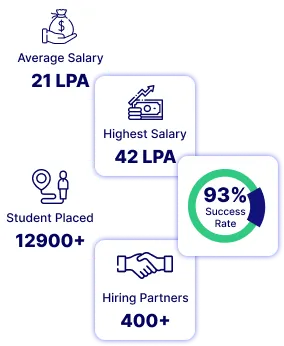A subfield of machine learning and artificial intelligence known as supervised machine learning is supervised learning. Labeled datasets are used to train algorithms that can effectively identify data or predict outcomes. The cross-validation method involves adjusting the model's weights when new data is brought. As an example, supervised learning may be used to separate spam from your inbox and put it in a different location.
Supervised learning algorithms and how supervised learning works
Supervised machine learning procedures use a wide range of algorithms and processing methods. An overview of some of the most prevalent techniques for learning, often computed with the help of programs like R or Python, is provided below:
A network of neurons
Neural networks are primarily used in deep learning algorithms because they imitate the interconnection of the human brain via layers of nodes. Weights, bias (or threshold), and output are components of a node. There is a threshold at which a node is "activated" or "fired" when its output reaches that threshold. Through a process known as gradient descent, neural networks can learn this mapping function through supervised learning. We can be sure of the model's correctness when the cost function is at or near zero.
Inexperienced Bayes
A classification method that uses the Bayes Theorem's premise of class conditional independence is known as Naive Bayes. A feature's existence has no bearing on the likelihood of another feature's presence, and each prediction has the same influence on the outcome. Multinomial Naive Bayes, Bernoulli Naive Bayes, and Gaussian Naive Bayes are all forms of Naive Bayes classifiers. Text categorization, spam detection, and recommendation systems are some of the most common uses of this technology.
Reciprocal analysis
Linear regression is a statistical method for determining the connection between two or more independent variables and the dependent variable. There are just two variables in a basic linear regression model: independent and dependent variables. Multiple linear regression is a term used to describe an analysis with more than two independent variables. The least squares technique is used to determine the best fit line for each kind of linear regression. When plotted on a graph, this line is straight, unlike other regression models.
Regression analysis
Unlike linear regression, logistic regression is used when the dependent variable is categorical, such as "yes" or "no," which has binary outputs like "true" or "false." For example, spam detection is a binary classification issue that may be solved using logistic regression models, which are more often utilized for this kind of problem.
Automated splines machine (SVM)
Vladimir Vapnik invented the famous supervised learning model known as the support vector machine, which may classify and predict data. For classification challenges, it is often used to generate a hyperplane when the distance between two classes of data points is at its maximum. The decision boundary is a hyperplane that divides the data points into two categories (oranges vs. apples, for example).
Closest neighbor in the K-northeast
Data points are classified using the K-nearest neighbor technique, commonly known as the KNN algorithm, which is a non-parametric approach. This technique is based on the premise that data points with comparable characteristics may be identified nearby. Since the distance between data points is commonly calculated using Euclidean distances, the algorithm then uses the most common category or average as the basis for assigning categories.
As the test dataset develops, it becomes less tempting for classification jobs because of its simplicity of use and short computation time. KNN is often used in picture identification and recommendation systems.
A haphazard woodland
For classification and regression applications, random forest is a useful machine learning approach. Decision trees that are not coupled are combined into a "forest" to minimize variation and improve data predictions.
Supervised learning examples
A wide range of commercial applications may benefit from the usage of supervised learning models, including the following:
When used in computer vision and imaging analysis, supervised learning algorithms may be used to identify objects in movies and images, allowing them to be employed in a variety of computer vision approaches.
Supervised learning models are widely used in the creation of predictive analytics systems to give in-depth insights into numerous business data points (predictive analytics). For example, if a specific output variable is known, it is possible to predict certain outcomes, which helps business executives defend their actions or pivots.
In order to extract and categorize essential bits of information from massive amounts of data, businesses may use algorithms that use supervised machine learning to extract and classify context, emotion, and intent. In order to acquire a better knowledge of how customers interact with your brand, this may be really helpful.
Spam detection is an example of a supervised learning model, as is spam detection itself. Organizations may train databases to spot trends or abnormalities in fresh data using supervised classification algorithms, allowing them to arrange spam and non-spam mail efficiently.
Challenges of supervised learning
Many firms have found the benefits of supervised learning to outweigh the difficulty of establishing long-term supervised learning models. A few of these difficulties are as follows:
" Properly structuring supervised learning models calls for a certain amount of knowledge and experience.
" It takes a lot of time to train supervised learning models.
" Datasets are more susceptible to human mistakes, which may lead to inaccurate algorithmic learning.
" Data cannot be clustered or classified by supervised learning models on their own, unlike unsupervised models.
The IoT Academy is the one-stop solution to all your queries related to Machine Learning. Getting insights from the industry experts you will be able to know in-depth about the different concepts related to Machine Learning like never before. 


